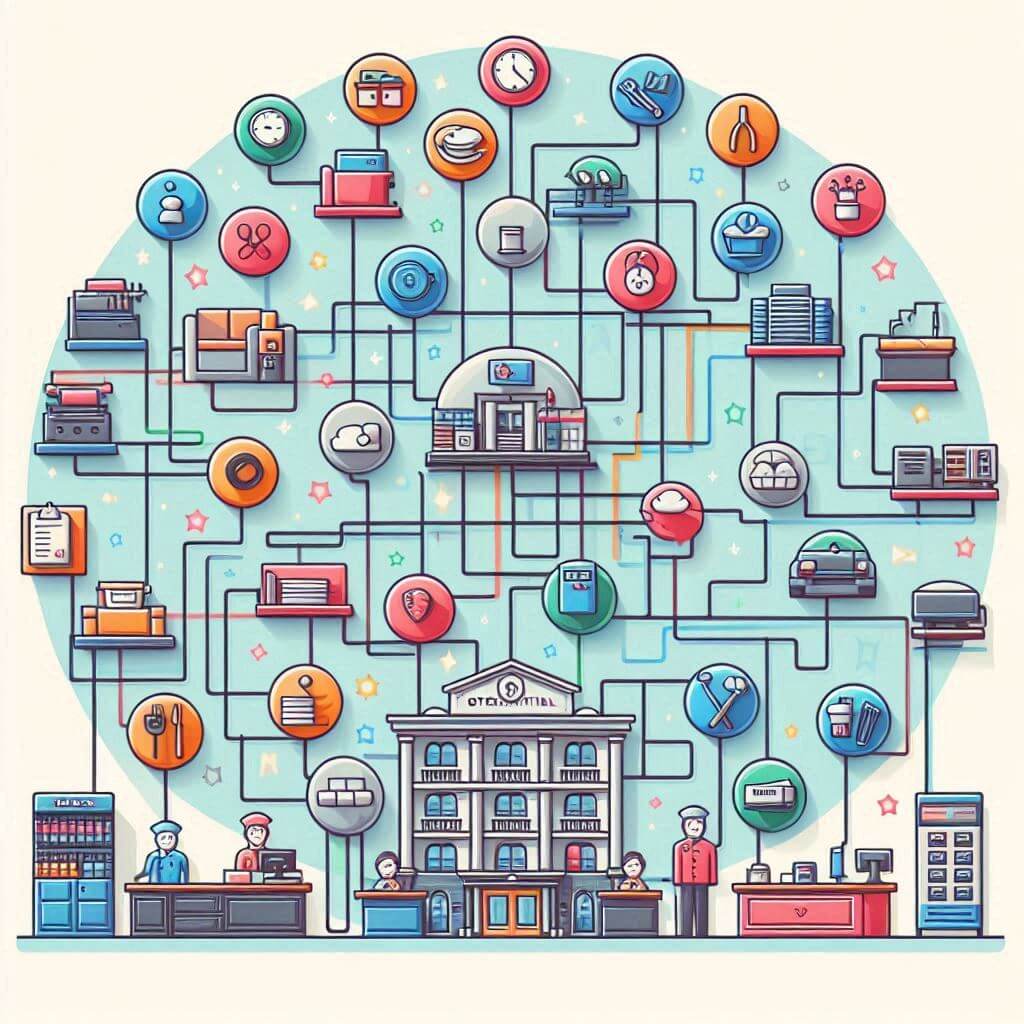Table of Contents
What is Organization Chart?
An organization chart (or org chart) is a visual diagram that shows the structure of an organization, illustrating the relationships, roles, and hierarchy within it. It’s often represented in a tree-like structure, with higher-ranking positions at the top and lower-ranking roles below, connected by lines that indicate reporting relationships.
Key elements include:
- Hierarchy: The chart clarifies the levels of authority, with upper management (e.g., CEO, board of directors) at the top, middle management (e.g., department heads) in the middle, and line staff at the bottom.
- Roles and Departments: Different roles and departments are organized to reflect functional divisions within the organization, like Marketing, Finance, Human Resources, and Operations, each with specific duties.
- Reporting Relationships: The lines between roles indicate who reports to whom. This helps clarify decision-making flows and establishes accountability within the organization.
- Communication Flow: The chart serves as a reference for communication paths, making it easier to understand who to contact for information or decisions within the organization.
- Work Distribution: It shows how tasks and responsibilities are divided among departments, helping align resources and ensuring balanced workloads.
Organization charts help in understanding the internal structure of a company, streamlining decision-making, clarifying employee roles, and guiding the growth and development of the organization.
Hotel Organization Chart
An organization chart for a 5-star hotel typically reflects a hierarchical structure with various departments focused on guest services, operations, and management. Here’s a general layout:
1. General Manager (GM)
- Role: The GM oversees the entire hotel operation, ensuring smooth functioning, profitability, and customer satisfaction.
2. Executive Committee (Reports to the GM)
- Director of Operations (or Assistant General Manager)
- Oversees day-to-day operations across various departments.
- Director of Finance
- Handles the hotel’s financial operations, including budgeting, accounting, and audits.
- Director of Human Resources
- Manages recruitment, staff training, and employee relations.
- Director of Sales and Marketing
- Focuses on increasing hotel revenue through marketing strategies, partnerships, and room sales.
- Director of Rooms
- Responsible for front office, housekeeping, and guest services.
- Executive Chef
- In charge of all culinary operations across restaurants, bars, banquets, and room service.
3. Departments (Report to the Executive Committee Members)
A. Rooms Division
- Front Office Manager
- Responsible for guest check-ins/outs, concierge services, and reservations.
- Housekeeping Manager
- Ensures cleanliness and maintenance of guest rooms and public areas.
- Reservations Manager
- Manages room bookings, optimizing occupancy rates.
B. Food and Beverage (F&B) Department
- Restaurant Manager
- Oversees operations in the hotel’s restaurants and ensures high service standards.
- Banquet Manager
- Manages event spaces and banquet services.
- Bar Manager
- Oversees the hotel’s bar and beverage services.
C. Sales and Marketing
- Sales Manager
- Focuses on corporate accounts, events, and partnerships to boost hotel business.
- Marketing Manager
- Promotes the hotel’s brand, events, and services through marketing strategies.
D. Finance Department
- Accounting Manager
- Manages day-to-day financial transactions, payroll, and budgeting.
- Revenue Manager
- Focuses on maximizing the hotel’s revenue through dynamic pricing strategies.
E. Human Resources
- Training Manager
- Responsible for staff development, orientation, and ongoing training programs.
- Recruitment Manager
- Manages hiring, onboarding, and workforce planning.
F. Maintenance and Engineering
- Chief Engineer
- Oversees the physical upkeep of the hotel, including repairs, safety systems, and energy management.
G. Security
- Security Manager
- Ensures guest and employee safety, monitors security protocols, and manages emergency procedures.
4. Support Departments
- IT Manager
- Manages all technological systems, including guest booking systems, Wi-Fi, and security systems.
- Spa and Wellness Manager
- Oversees spa services and wellness programs.
Each department ensures the hotel operates smoothly and provides a high-quality guest experience. The chart can vary slightly depending on the specific hotel or chain.
Relation between a hotel and organization chart
The relationship between a hotel and its organization chart is essential for defining roles, responsibilities, and communication flows within the hotel. Here’s how they connect:
- Hierarchy and Structure: The organization chart illustrates the hierarchy within the hotel, typically dividing it into different departments such as front office, housekeeping, food and beverage, sales and marketing, and management. Each level has specific roles, from executives to line-level employees, ensuring clarity in reporting relationships.
- Division of Responsibilities: An organization chart helps distribute responsibilities across various departments. For example, the front office manages guest check-ins, housekeeping handles room cleanliness, and the food and beverage department oversees dining services. This division ensures each team focuses on core tasks efficiently.
- Efficient Communication: The chart establishes communication channels, helping staff know who to report to and where to get support, which reduces confusion and fosters smoother operations. Clear communication is vital in hotels due to the 24/7 nature of the business.
- Guest Experience and Service Quality: Each position on the organization chart contributes to enhancing the guest experience. When every role, from management to room attendants, understands their function, service quality improves, helping the hotel achieve customer satisfaction and loyalty.
- Scalability and Growth: As the hotel grows, the organization chart can adapt to accommodate new roles or departments. For example, as services expand, the hotel might add an events manager or a revenue manager, ensuring the structure remains flexible and supports growth.
In essence, a hotel’s organization chart is a blueprint for its internal structure, guiding operations, improving coordination, and ensuring each department aligns with the hotel’s goals and service standards.
wiki say’s: Most hotel establishments are run by a general manager who serves as the head executive (often referred to as the “hotel manager”), department heads who oversee various departments within a hotel (e.g., food service), middle managers, administrative staff, and line-level supervisors. The organizational chart and volume of job positions and hierarchy varies by hotel size, function and class, and is often determined by hotel ownership and managing companies.

Leave a Reply